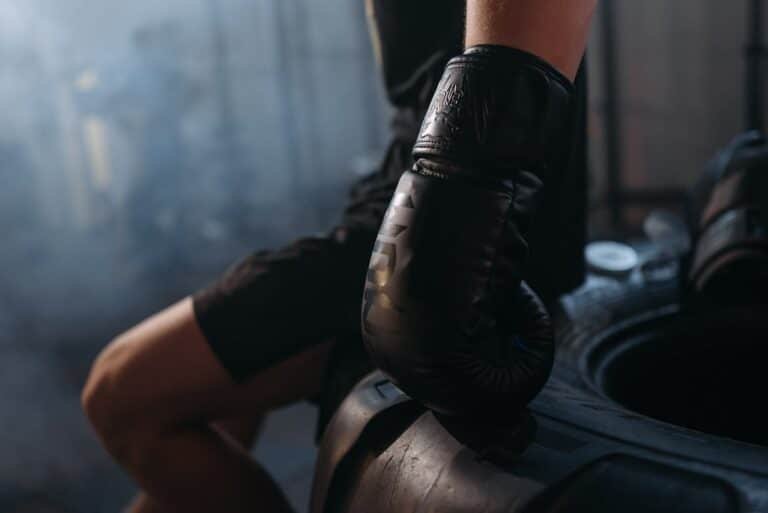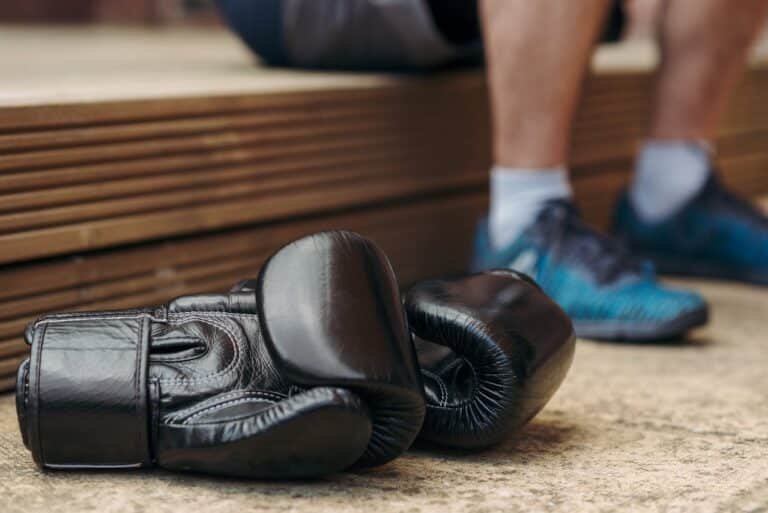Learning how to start boxing training at home doesn’t require a gym membership or fancy equipment. If you’re a beginner, you can kick off your training from the comfort of your own home with just a few basics and a simple plan.
Whether you’re looking to get fit, learn the fundamentals, or eventually work toward sparring, home boxing training is a great way to build confidence and skill at your own pace. In this guide, we’ll show you exactly how to get started.
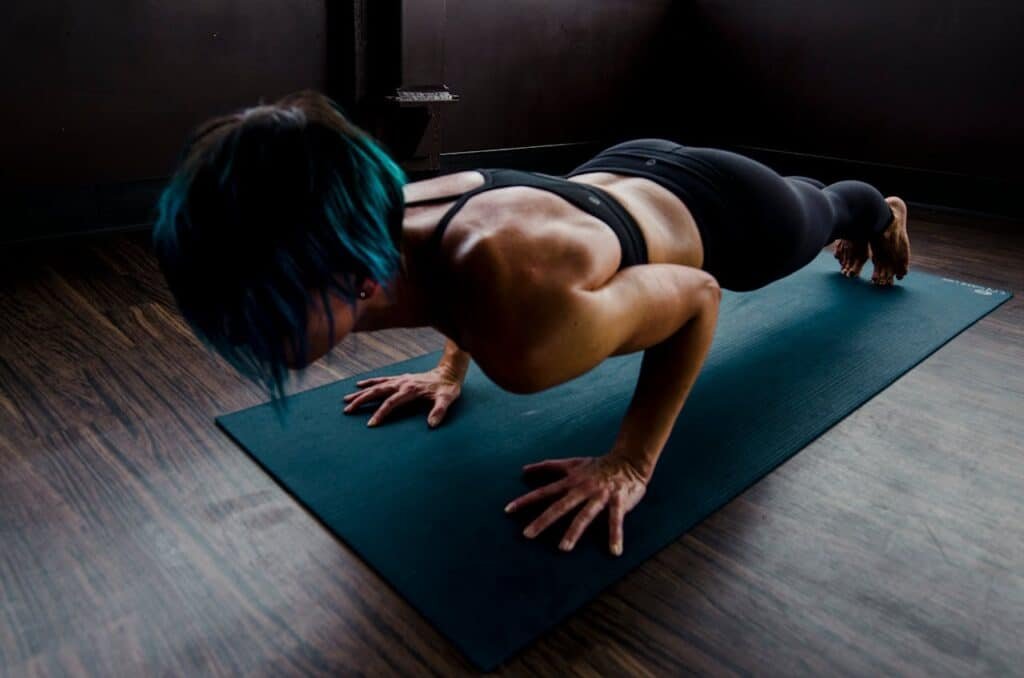
Why You Should Start Boxing Training at Home
Training at home offers flexibility and convenience. There’s no commute, no waiting for equipment, and you can go at your own speed. It’s ideal for complete beginners who want to build basic technique, conditioning, and confidence before stepping into a class or ring.
Some of the benefits include:
- No gym intimidation
- Affordable starting costs
- Flexibility around your schedule
- A good foundation before attending classes
What Equipment You Need to Start Boxing Training at Home
You can start without any equipment, but a few items can dramatically improve your training. Here’s what we recommend:
Boxing Gloves and Hand Wraps
Even if you’re not hitting anything yet, it’s good to get used to training in gloves and hand wraps. This builds comfort and protects your wrists once you begin bag or pad work. Wearing hand wraps and boxing gloves also provides a big confidence boost as it helps you get in the flow state when looking at shadow boxing, pad or solo work.
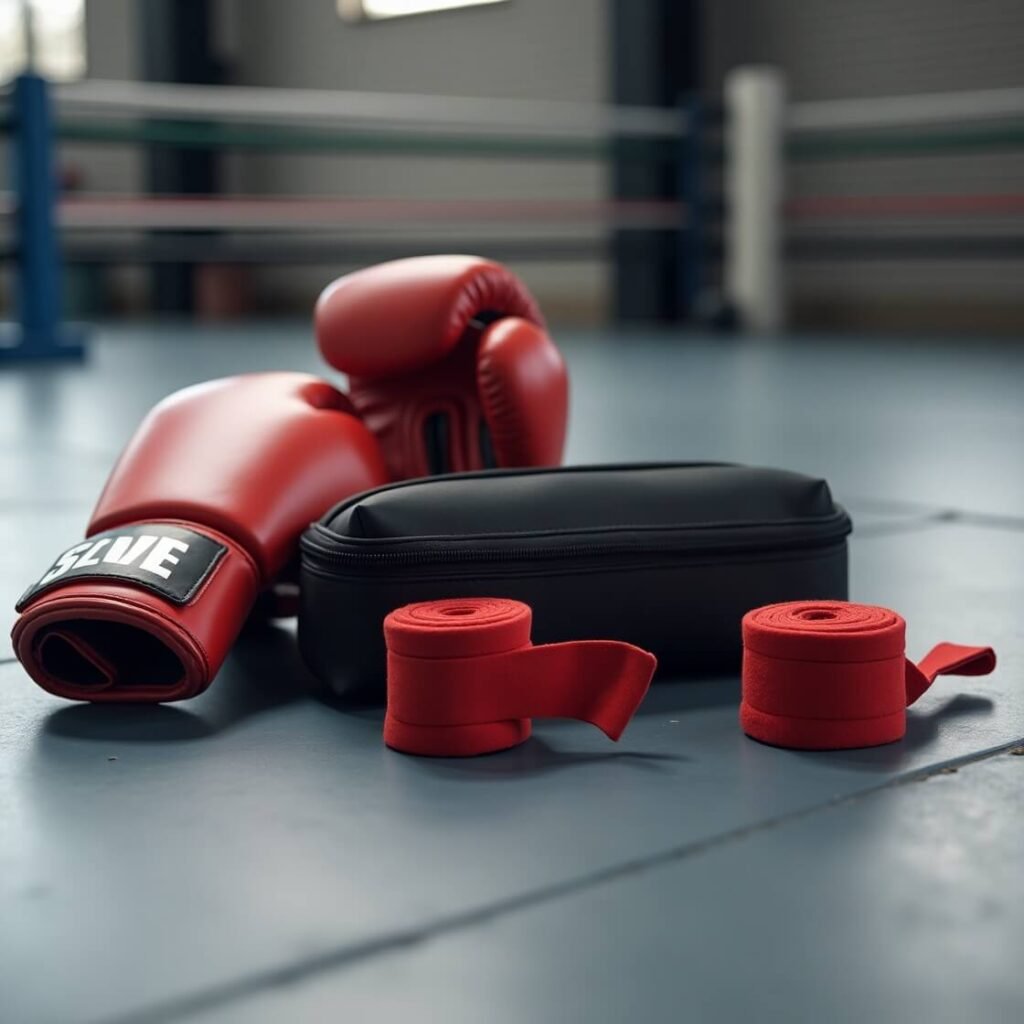
Looking to purchase some beginner gear? We’ve got a fantastic post on the top beginner boxing gloves for 2025!
Mirror or Phone Camera
To develop proper technique, it helps to see yourself in motion. A mirror or video feedback helps identify and correct form mistakes during shadowboxing.
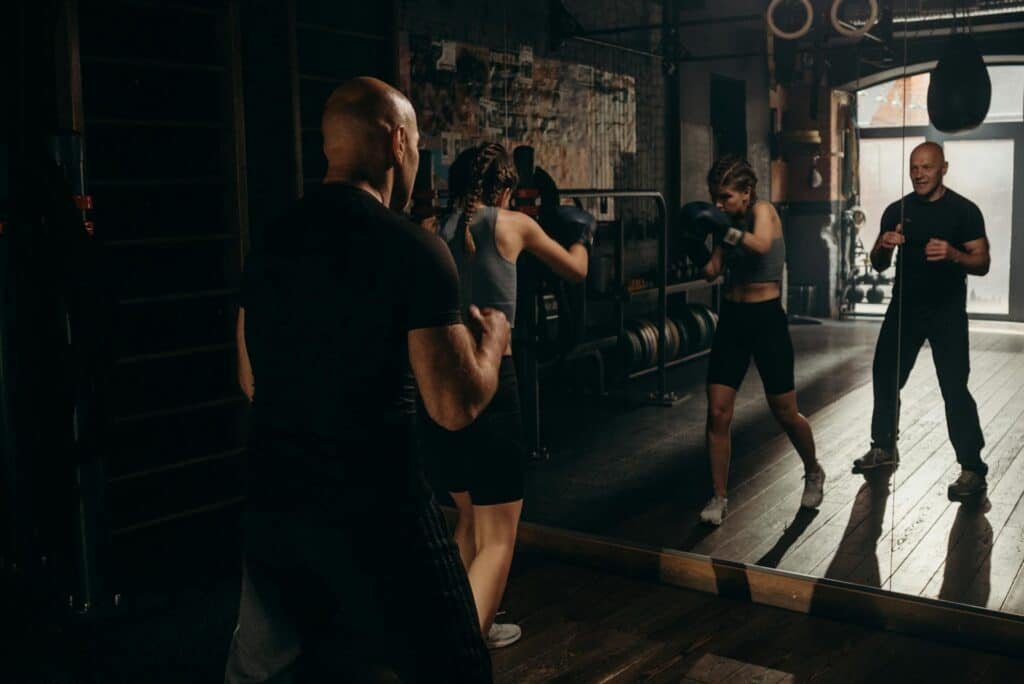
We find it’s good to imagine boxing yourself in the mirror. If you throw a punch at your reflection, what could you do to dodge or block it?
Heavy Bag (Optional but Useful)
If you have space and a solid anchor point, a heavy bag is one of the best tools for home training. It develops real contact timing, power, and endurance.
While it might be better to wait and buy one later in your journey, having a heavy bag can speed up your development if training solo, as it can take the place of a partner in some drills.
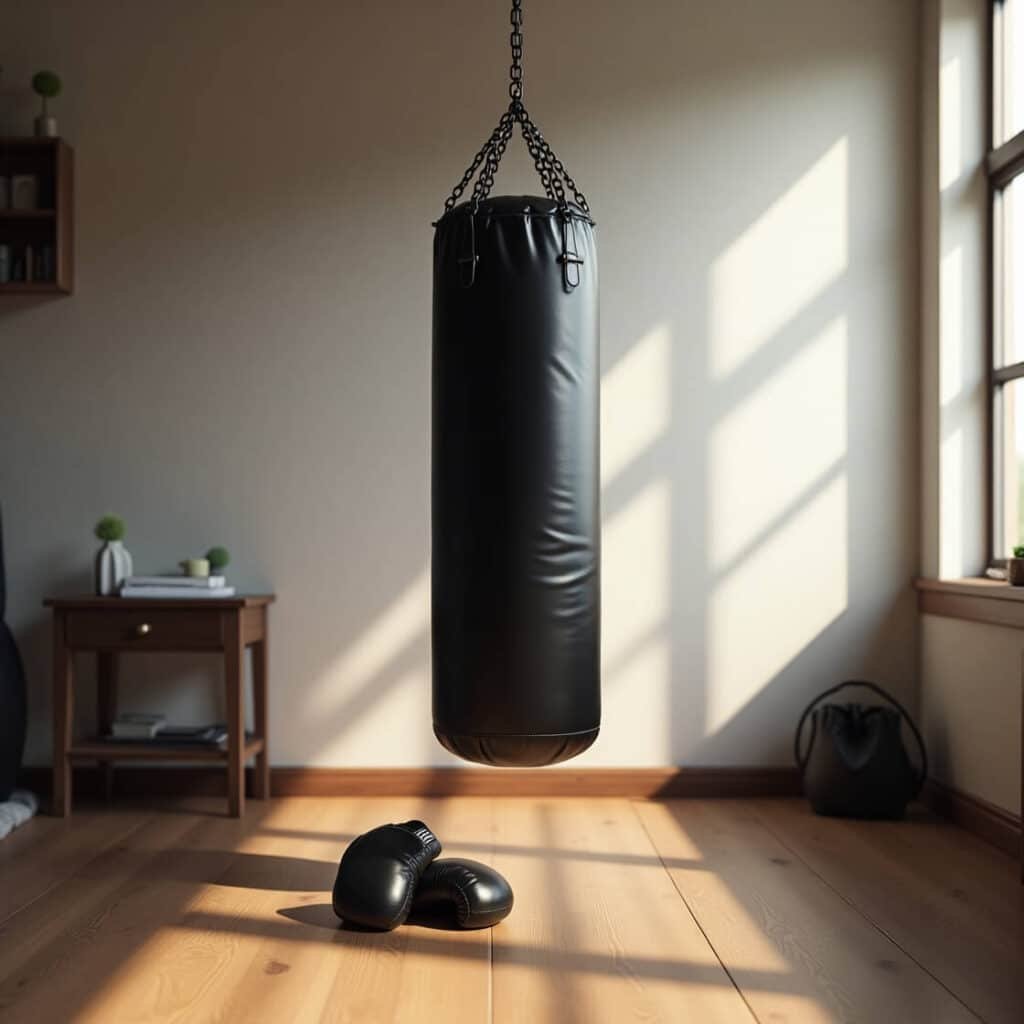
Looking for more information on effective boxing bag workouts? We took a look at how to use a heavy bag effectively.
How to Structure Your Routine When Starting Boxing Training at Home
When thinking about how to start boxing training at home, focus on building habits and form before intensity. Here’s a simple structure to follow:
Warm-Up
Spend 5 to 10 minutes skipping rope, shadowboxing lightly, or doing dynamic stretches. This gets your joints ready for movement and builds good habits.
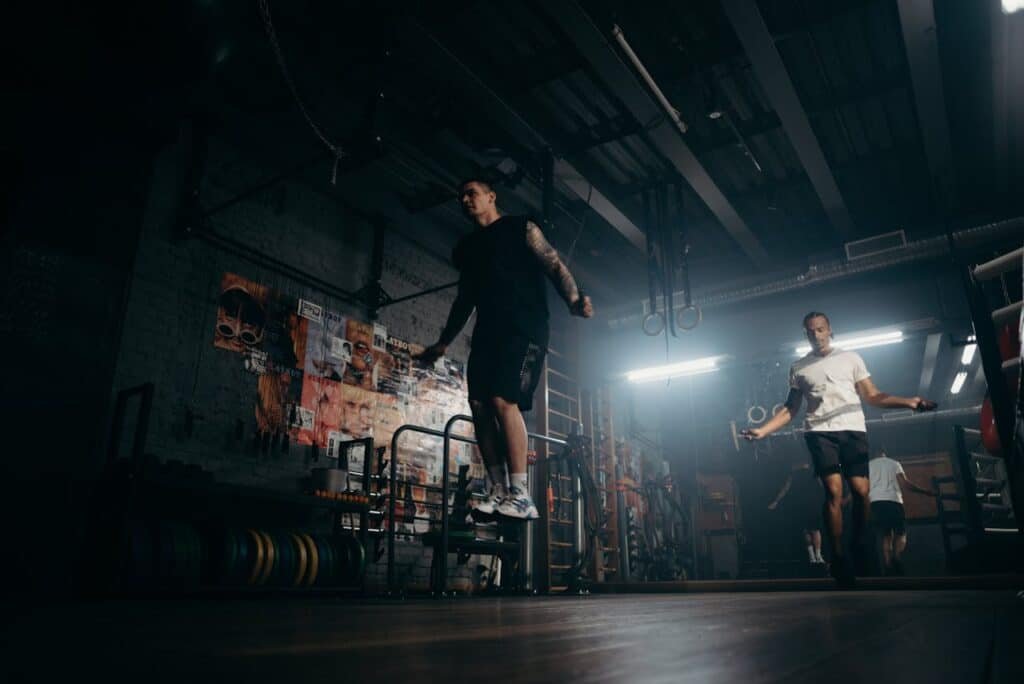
Take a look at our Beginners Boxing Checklist for inspiration about starter boxing equipment.
Shadowboxing
Shadowboxing is the core of beginner training. It helps you practice technique, footwork, and combinations with full control and no equipment. Start with 2 to 3 rounds of 2 minutes, focusing on form.
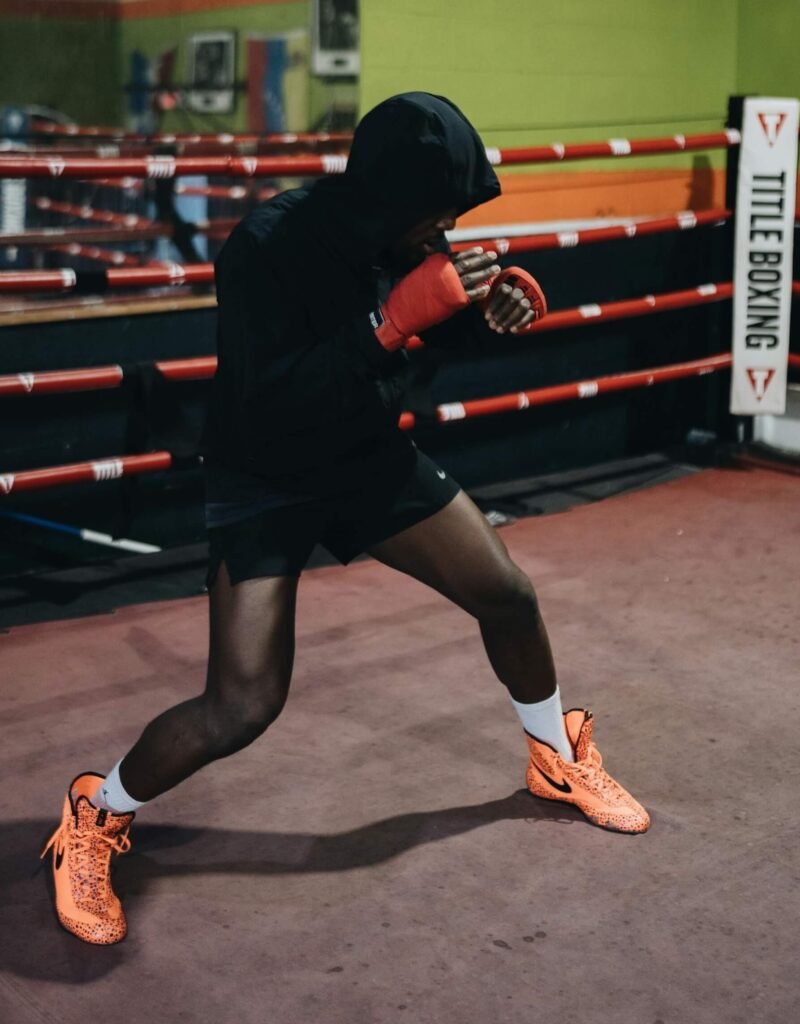
Technique Focus
Pick one skill per session. For example, you can start by learning how to throw a proper jab, which is the most important punch in boxing. Other examples include working on hooks, working on foot movement, or practising defence, like slipping or blocking. Keep it simple and slow.
Conditioning
Finish your session with a bodyweight circuit. Push-ups, squats, core work, or jump rope rounds build stamina and boxing-specific strength. One of the best ways to ease into boxing training at home is to build short, focused sessions using bodyweight movements.
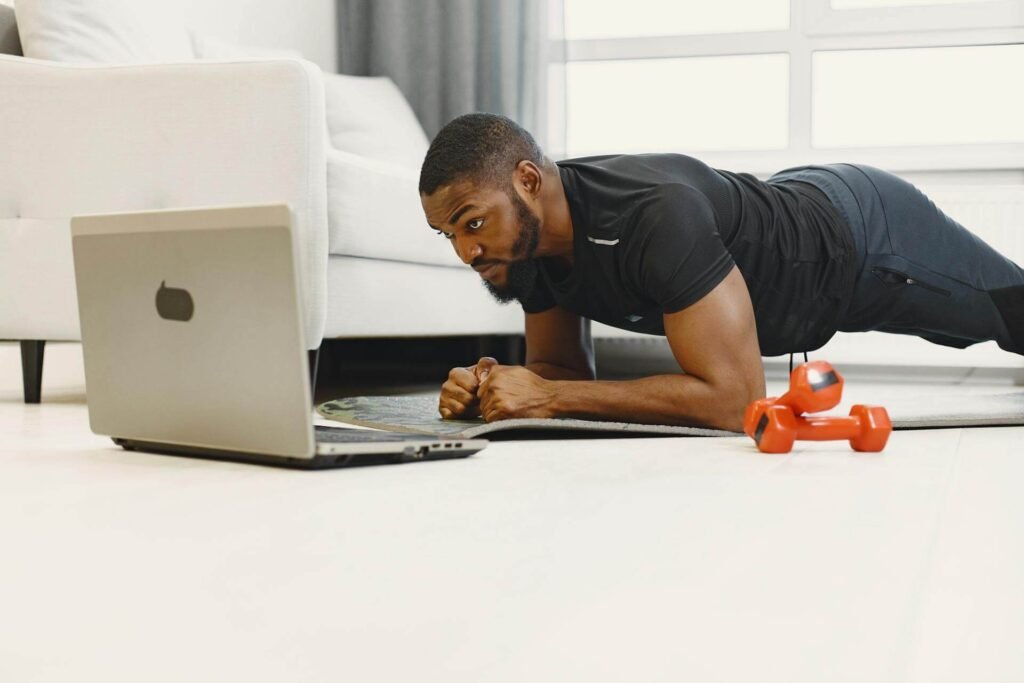
Best Drills for Home Boxing Training
Here are some beginner-friendly drills you can include in your sessions:
- Shadowboxing with movement (forward, backward, side to side)
- 1–2 combinations (jab and cross) while circling
- Jab only rounds to build distance control and rhythm
- Basic footwork ladder using tape on the floor
- Defensive work from shadow opponent punches
You can rotate these across the week to keep training varied without needing lots of space or gear.
How Often Should You Train at Home
Start with two to three sessions per week. Focus on consistency and form, not intensity. You can build up to more frequent sessions as your body adapts.
Even 20-minute focused sessions can lead to significant improvement over a few weeks. Not to mention make you feel better and stronger.
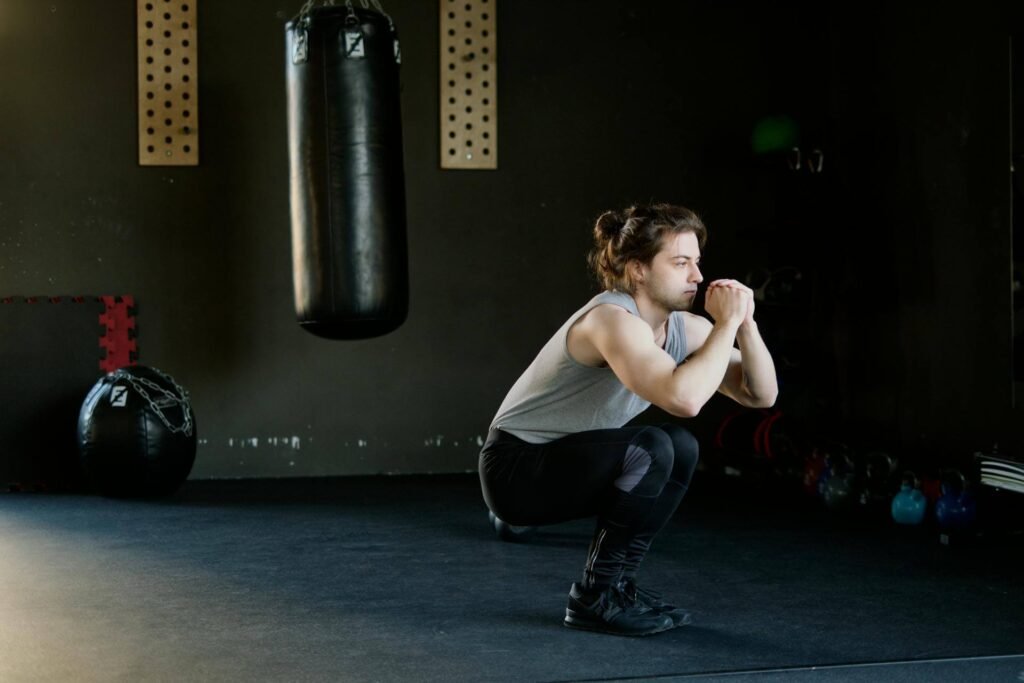
Make sure you don’t fall into the trap of not training legs much. Power starts from the legs and having a solid foundation is great for boxing!
When to Consider Joining a Gym
Training at home is great for getting started, but eventually you’ll want feedback, partner drills, and sparring experience. If you’re consistently training and want to take your progress to the next level, consider joining a local gym.
Final Thoughts on How to Start Boxing Training at Home
As you’ve learned, how to start boxing training at home comes down to consistency, not complexity. With just a few essential items and a simple routine, you can build real skill, fitness, and confidence – all from your living room or garage. Stick with it, stay focused, and the results will come.
Looking for more information?
- Best Boxing Gloves for Beginners
- Boxing Hand Wraps: A Beginner’s Guide
- What Size Boxing Gloves Do I Need?
For more info on quick sessions and their impact on stress, check out this additional post.

